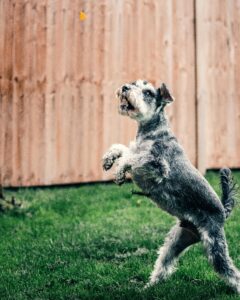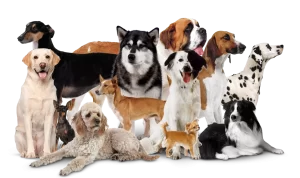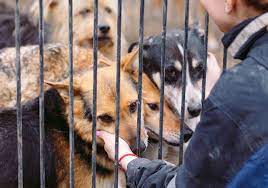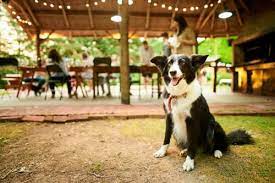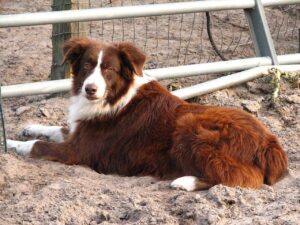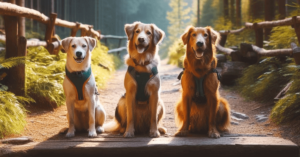The Catahoula Leopard Dog is a medium-large, short-coated dog, known for its many varied coat and eye colors and patterns. It is the state dog of Louisiana and a versatile working dog that can hunt, herd, and guard.
If you have a Catahoula Leopard Dog or are planning to get one, you might be wondering how to train this intelligent and energetic breed. Training your Catahoula Leopard Dog is not only important for his safety and well-being, but also for your enjoyment and satisfaction as a dog owner.
In this article, we will share some tips and tricks on how to train your Catahoula Leopard Dog in 30 days or less. We will cover the following topics:
- House and crate training
- Leash training
- Socialization
- Basic commands
- Advanced training
Table of Contents
ToggleHouse and Crate Training
House training is one of the first things you need to teach your Catahoula Leopard Dog. It is the process of teaching him where to eliminate and where not to. Crate training is a helpful part of house training, as it provides your dog with a safe and comfortable place of his own, and prevents him from getting into trouble when you are not around.
Here are some steps to follow for house and crate training your Catahoula Leopard Dog:
- Choose a designated spot for your dog to do his business, preferably outside. If you live in an apartment, you can use a balcony, a patio, or a litter box.
- Take your dog to the spot regularly, especially after he wakes up, eats, drinks, plays, or naps. Praise and reward him with treats and affection when he eliminates them.
- If you catch your dog having an accident inside, interrupt him with a firm “no” and take him to the spot immediately. Do not scold or punish him, as this will only make him fearful and confused.
- Use a crate that is large enough for your dog to stand, turn around, and lie down comfortably, but not too big that he can use one corner as a bathroom. Put a soft bed, a toy, and a bowl of water inside the crate, and make it a positive and inviting place for your dog.
- Introduce your dog to the crate gradually, starting with short periods of time and increasing the duration as he gets used to it. Do not force your dog into the crate or leave him there for too long, as this will make him resent it.
- Use the crate when you need to leave your dog alone, at night, or when you want to prevent accidents or destructive behavior. Always let your dog out of the crate as soon as possible, and take him to the spot to eliminate.
Leash Training
Leash training is another essential skill for your Catahoula Leopard Dog. It is the process of teaching him how to walk politely on a leash, without pulling, lunging, or barking. Leash training will make your walks more enjoyable and safer for both of you.
Here are some steps to follow for leash training your Catahoula Leopard Dog:
- Choose a suitable leash and collar or harness for your dog. Avoid using choke chains, prong collars, or retractable leashes, as they can cause injury or discomfort to your dog. A flat collar or a front-clip harness and a 4-6 feet leash are recommended.
- Start leash training your dog indoors, where there are fewer distractions. Put the leash on your dog and let him get used to it. Reward him with treats and praise when he stays calm and relaxed.
- Hold the leash in your right hand and your dog on your left side. Use a cue word, such as “let’s go” or “heel”, and start walking. If your dog walks nicely by your side, reward him with treats and praise. If he pulls, stops, or goes in a different direction, stop and wait for him to come back to you. Do not yank or drag him, as this will only make him resist more.
- Gradually increase the distance and duration of your walks, and introduce your dog to different environments, such as your backyard, your neighborhood, or a park. Always keep your dog under control and be alert for potential distractions, such as other dogs, people, cars, or wildlife. If your dog gets excited or scared, redirect his attention to you with a treat or a toy, and move away from the source of distraction.
- Practice leash training your dog every day, and be consistent and patient. Leash training can take time and effort, but it will pay off in the long run.
Socialization
Socialization is the process of exposing your Catahoula Leopard Dog to a variety of people, animals, places, sounds, and situations, and teaching him how to behave appropriately and confidently in different scenarios. Socialization is crucial for your dog’s mental and emotional development, as well as his ability to get along with others.
Here are some steps to follow for socializing your Catahoula Leopard Dog:
- Start socializing your dog as early as possible, preferably between 8 and 16 weeks of age, when he is most receptive and curious. However, do not take your dog out until he has completed his vaccinations, as he might be vulnerable to diseases.
- Introduce your dog to different people, such as men, women, children, seniors, and people of different races, sizes, and appearances. Let your dog approach them at his own pace, and ask them to pet, talk, and play with him gently and calmly. Reward your dog with treats and praise when he interacts with them positively.
- Introduce your dog to different animals, such as other dogs, cats, birds, and livestock. Make sure the animals are friendly and vaccinated, and supervise the interactions closely. Allow your dog to sniff, play, and communicate with them, but intervene if there are any signs of aggression or fear. Reward your dog with treats and praise when he behaves well with them.
- Introduce your dog to different places, such as your home, your car, your vet’s office, a pet store, a groomer’s salon, a friend’s house, or a dog park. Let your dog explore and experience the sights, sounds, smells, and textures of each place, and reassure him with treats and praise when he is calm and curious.
- Introduce your dog to different sounds, such as thunder, fireworks, sirens, vacuum cleaners, doorbells, or babies crying. Start with low volumes and short durations, and gradually increase them as your dog gets used to them. Do not force your dog to listen to something that scares him, and comfort him with treats and praise when he is brave and relaxed.
Basic Commands
Basic commands are the foundation of communication and obedience for your Catahoula Leopard Dog. They are simple words or phrases that tell your dog what you want him to do, such as sit, stay, come, or leave it. Teaching your dog basic commands will make your life easier and your dog happier, as he will know what is expected of him and how to please you.
Here are some steps to follow for teaching your Catahoula Leopard Dog basic commands:
- Choose a quiet and distraction-free place to train your dog, such as your living room or your backyard. Have some high-value treats and a clicker ready, and keep your training sessions short and fun, no more than 10-15 minutes at a time.
- Start with the easiest and most useful command, such as “sit”. Hold a treat in front of your dog’s nose, and slowly move it up and back over his head. As your dog follows the treat with his eyes, his butt will naturally lower to the ground. As soon as he sits, click and reward him with the treat and praise. Repeat this several times, until your dog sits reliably. Then, add a verbal cue, such as “sit”, before you move the treat. Gradually fade out the treat and the clicker, and only use the verbal cue and praise.
- Move on to the next command, such as “stay”. Ask your dog to sit, and then show him your palm and say “stay”. Take a step back, and if your dog stays in place, click and reward him with the treat and praise. Repeat this several times, increasing the distance and duration of the stay. If your dog moves, say “no” and start over. To release your dog from the stay, use a cue word, such as “okay” or “free”, and reward him with a treat and praise.
- Continue with the other commands, such as “come”, “down”, “leave it”, or “heel”, using the same method of luring, clicking, rewarding, and cueing. Always use clear and consistent words and gestures, and reward your dog for every correct response. Do not repeat the cue more than once, and do not reward your dog for partial or incorrect responses.
- Practice the commands in different situations and environments, with different levels of distraction and difficulty. For example, you can ask your dog to sit and stay in the kitchen while you prepare his food, or to come to you when you call him from another room. This will help your dog generalize the commands and respond to them reliably in any scenario.
Advanced Training
Advanced training is the process of teaching your Catahoula Leopard Dog more complex and challenging skills, such as tricks, agility, or service tasks. Advanced training is not necessary for every dog, but it can be a great way to stimulate your dog’s mind and body, strengthen your bond, and have fun together.
Here are some steps to follow for advanced training your Catahoula Leopard Dog:
- Choose an advanced skill that you want to teach your dog, such as roll over, shake, fetch, or speak. Make sure the skill is suitable for your dog’s age, health, and personality, and that you have the necessary equipment and space for it.
- Break down the skill into smaller and simpler steps, and teach each step separately. For example, to teach your dog to roll over, you can start by asking him to lie down, then lure him to turn his head to one side, then to roll onto his back, then to roll over to the other side, and finally to get up. Reward your dog with treats and praise for each step, and gradually link them together until he can perform the whole skill.
- Use a cue word or gesture, such as “roll over” or a circular motion with your hand, to signal your dog what you want him to do. Repeat the cue and the skill several times, until your dog can associate them and respond to them reliably. Gradually fade out the treats and the lures, and only use the cue and the praise.
- Practice the skill in different situations and environments, with different levels of distraction and difficulty. For example, you can ask your dog to roll over on different surfaces, such as grass, carpet, or tile, or in different places, such as your home, your yard, or a park. This will help your dog master the skill and perform it in any scenario.
Conclusion
Training your Catahoula Leopard Dog is not only a responsibility, but also a rewarding and enjoyable experience. By following the tips and tricks we shared in this article, you can train your Catahoula Leopard Dog in 30 days or less, and have a well-behaved and happy companion. Remember to always be consistent, patient, and positive, and to have fun with your dog. Happy training!






